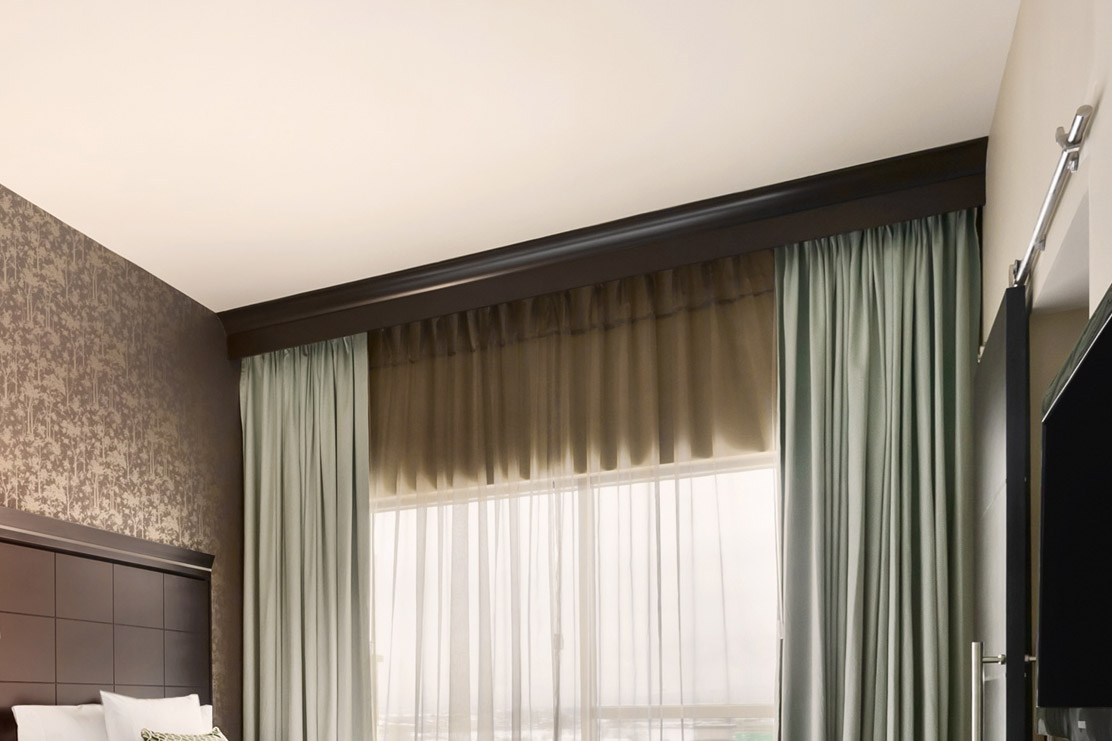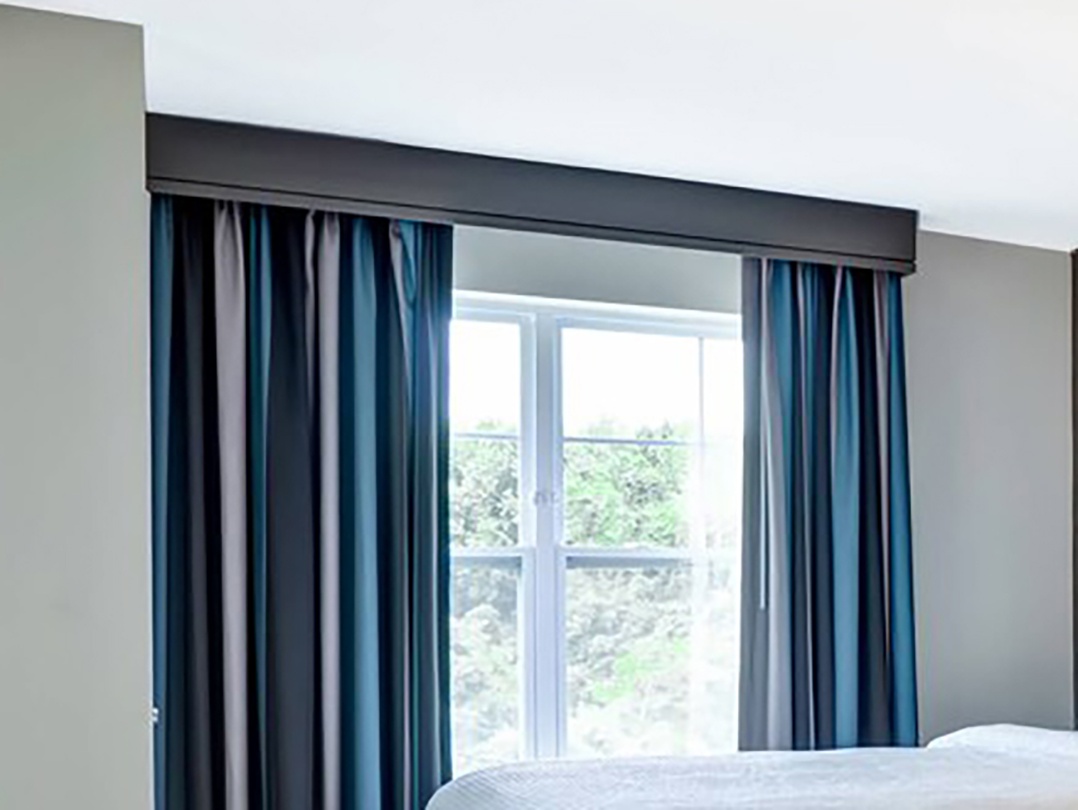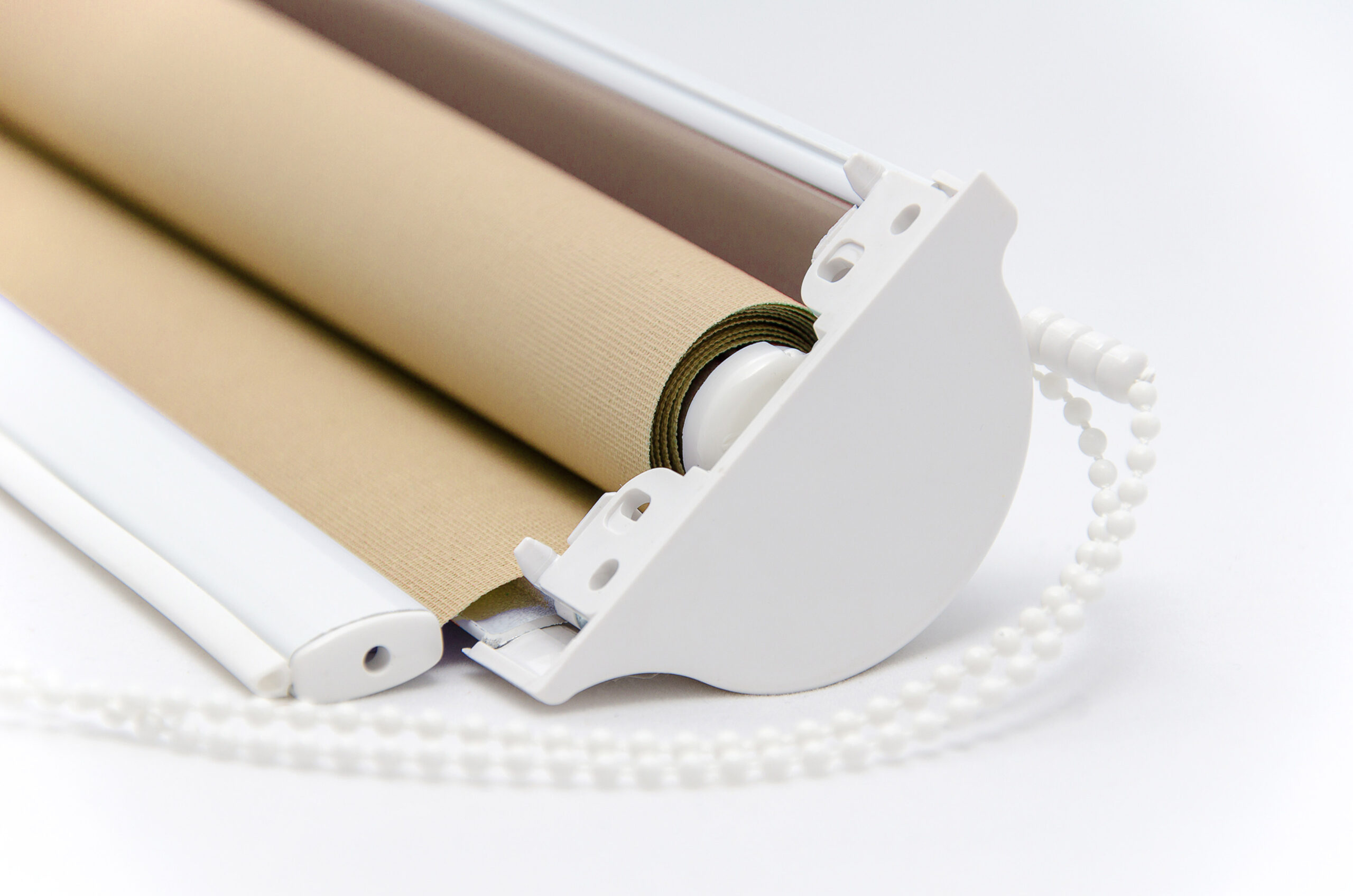Top Treatments
Top treatments refer to the way you “dress up” and cover your drapery or roller shade hardware. A lot of the time, these can complement and even elevate the overall look of the window treatment by creating a seamless transition or a grand statement for the fabric below.

Fabrics Overview
Solid Colors
Patterns
Materials
Thread Count
Types of Top Treatments
Valances are a simpler form of top treatment. It can be presented as either a painted metal or wooden “box” that hides rods and tracks. It can come wrapped in a complementary fabric. It can also come in a soft, loose construction that layers a complementary, hanging fabric visually helps transition from hardware to curtain. Think of valances as an extension of your curtains.
Cornices on the other hand are more decorative and unique in a stand-alone fashion. They’re made of wood and tend to resemble crown moulding. This can help frame your windows and become their own decorative feature regardless of the curtains hanging below. Think of cornices as living in harmony with curtains as its own decorative element in a space.
Cassettes as a top treatment apply to roller shades and is the most minimal and purpose-built form of covering hardware. Acting as a smaller, tighter valance, the cassette will cover the roll of fabric and its hardware and can either be a flat painted, or fabric wrapped piece.
There are more nuanced forms of top treatment we can explore together when you choose us to move forward in bringing your vision to fruition. For now, these are good, general pointers on what to look for.
Materials
Plastic: A tried and true, cheap material for when you want to execute on a budget. These can be painted, or wrapped in a fabric of your choosing. Never a bad option, thought it does tend to lack the weightiness and grandeur of more expensive materials.
Wood: As mentioned previously, both valances and cornices can be made of wood, though cornices are made exclusively of wood. Wood can range from cheap to expensive depending on the specie of wood you choose to use. All in all, however, a cornice will cost more due to the sheer bulk and extra use of material. A valance can stay budget friendly with its simpler, flat construction.
Metal: Finally metal has the potential to be budget friendly, or very custom and expensive. From punched patterns, to uniquely folded and moulded forms, to even flat surfaces, metal has a variety of avenues to explore. What’s more, like plastic and wood you can choose to paint it or go a different route and show off the natural shine of the material. Or apply a custom anodized or patina finish to elevate the look further.
Finishes
Stained: Woods that are not strongly colored can be stained to mimic more premium wood species and can be a cheaper, effective solution to achieving a color profile you seek.
Painted: Plastics, woods and metals can all be painted and is just about the simplest form of adding color to your top treatments. It also has the added benefit of allowing you to explore a seemingly infinite gamut of colors. The downside, if it is considered one, is that you have little to no room for texture as it will be a decidedly flat finish.
Polished: If you want a little shine and glamour added to your widow treatments, plastics, woods and metals can all have a glossy finish or polish applied.
Fabric wrapped: Lastly, you can apply and wrap a fabric around any of the materials listed above as a way of seamlessly marrying the top treatment to the curtains below.


